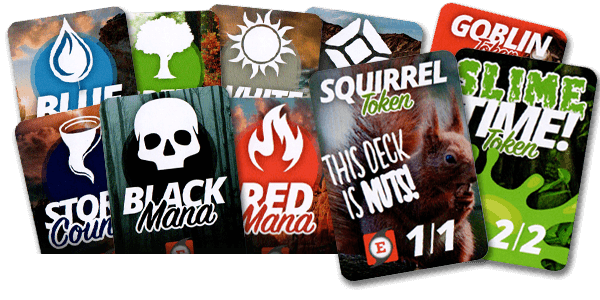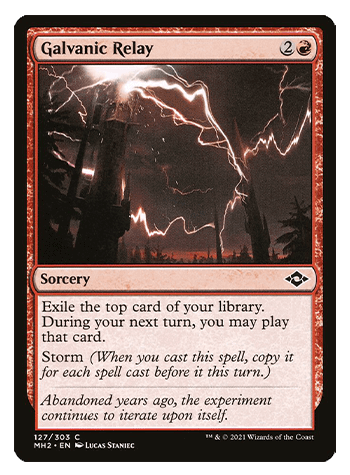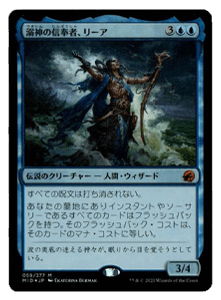It is time for part two of the TES Matchup Battles series and this episode we take on Grixis Delver! Now for any of you long time legacy players we may not think of Grixis immediately when we hear someone say Delver of Secrets. Typically in the past Delver of Secrets decks have been Temur or Jeskai decks, but people have been moving away from cards like Stoneforge Mystic, Nimble Mongoose and even Stifle, but people still love casting Delver of Secrets and Grixis Delver may be the new best shell for it. Learning and understanding the skills in this matchup will help you for years to come because Delver of Secrets and tempo strategies will not be going away, and will help you against other current Delver of Secrets decks.
How does Grixis Delver matchup against TES?
Delver of Secrets/Young Pyromancer – Both of these cards can put a pretty fast clock against us, and while it may not seem like it on paper they can kill very quickly. We need every turn we can get to make as many land drops to help beat all of their soft permission, but when we are getting beat down quickly it means we can’t sit around all day and reliably do that before our life total dwindles. This is one of the reasons that these two cards are important for Grixis Delver, because if they don’t have one of these two cards then that means we are not under any real pressure and can take our time comboing off to play around any of their counters and recover from a potential Wasteland. Young Pyromancer is also uniquely important because in the mid game it could make our Empty the Warrens unreliable as a win condition if they make enough tokens as a defense.
Cabal Therapy – This is their best discard spell because of how well it works with Young Pyromancer and this combination could easily take our best cards away if we don’t have a brainstorm for protection, but even if we do it is still likely to get at least one card.
Spell Pierce/Daze – Most lists I have seen run 4 Daze and 2-3 Spell Pierce and it’s because of these cards that prevent us from going off a lot of the time on turns 1 or 2 on the draw and turns 2 and 3 on the play because of how likely it is that they have one. These cards also make the fundamental turns in this matchup 3-5 because it allows us to play around these cards a little better by making land drops and using our discard spells more effectively instead of just trying to combo off as soon as possible and running right into all of this soft permission that gets worse the later the game goes.
Force of Will/Flusterstorm – These are their best disruption spells because they will usually require an answer in the form of a discard spell because we can’t really ever combo off into these counters unless the opponent counters the wrong spell or messes up. No matter how late the game goes we can never just play around them.
Wasteland – I covered playing around Wasteland in my previous TES Matchup Battles article and it still holds weight here. Beating Wasteland is going to be more about your skill in legacy and not so much about the matchup in particular. Some hints to beating these cards is fetching the basic Swamp if you can afford to. That is why it is there, but not all hands allow you to do this, so making this evaluation of when you can afford to will be key in beating Wasteland in all matchups that have it.
Deck List
- 4 Infernal Tutor
- 4 Brainstorm
- 4 Ponder
- 4 Gitaxian Probe
- 3 Cabal Therapy
- 3 Duress
- 3 Burning Wish
- 1 Empty the Warrens
- 1 Past in Flames
- 1 Ad Nauseam
- 4 Polluted Delta
- 3 Bloodstained Mire
- 2 Underground Sea
- 1 Volcanic Island
- 1 Badlands
- 1 Bayou
- 1 Swamp
Ways to win this matchup
Killing Them – TES is just a very fast deck and is good at doing it. We can easily win a lot of games on turn one and turn two, but the problem is unless we know the coast is clear that probably isn’t the best way to approach this matchup. The opponent has a lot of free and very cheap interaction that can stop us during out combo turn. This is why the fundamental turns of this matchup are generally going to be 3-5. The opponent can’t kill us before then and this allows us to make land drops and play around some of their softer counterspells while using our discard on their Force of Will and other must answer cards.
Past in Flames – This is one of our best cards in the matchup and where the new decklist really shines. If we don’t have an early kill through their disruption then we have a great mid-late game card that can help us combo off. Not only that, but if the opponent is pressuring us early with a Young Pyromancer it can be very hard to win with either an Empty the Warrens or an Ad Nauseam. We could easily be at a low life total where it is unreliable and they have enough creatures and tokens to defend off an Empty the Warrens, but that is also perfect case scenario for them.
Duress – All of their disruption is in the form of noncreature spells and is pretty varied, so having something that will automatically hit a disruption spell is very nice compared to Cabal Therapy where if we name the wrong card they could be holding two different counterspells where it would have just been nice to hit one of them because their suite of counterspells could be so different.
Turns one though three are the fundamental turns for the opponent because the pressure is on them to have a clock and their disruption immediately because we threaten a kill as early as turn 1. If they keep a hand with a few creatures, a cantip, a Lightning Bolt, and just lands then we can easily have a kill right when the game starts, so it is on them to have a great early game. On the flip side we aren’t really under a lot of pressure to kill early because we can just make land drops, assemble the combo, and then get enough discard spells to clear the way before our life total gets low. This is one of the reasons that I think we are a big favorite in this matchup. We can alter our game plan based on how the opponent is playing much more then they can. If our opponent doesn’t have much of a clock and is loaded on disruption we can go for the mid-late game Past in Flames kill, but if they don’t then we can easily kill or make enough goblins since they don’t have a real clean answer to them them starting on turn 1. It is the opponent who is pressured to have the right cards on the right turns.
Sideboarding
None
This may seem strange, because there are very few decks in legacy and all formats that don’t sideboard against a popular deck, but I truly believe this is correct and what I have been doing. The main boardable cards are Surgical Extraction, Abrupt Decay and Chain of Vapor. I don’t think any of these cards are that great in this matchup and I still want to have access to all of my Burning Wish targets for the midgame. Grixis Delver is already a pretty good matchup for us, so I don’t think we really need any help here. They don’t really play any unbeatable haymakers or terribly frightening individual card, it will require them multiple cards to beat us, so as long as we play around what we can and use discard to clear the way it should be a solid win for us.
Game Play
When thinking about how a matchup plays out or what a matchup traditionally looks like I always start from the beginning. Starting on turn one, and that is especially true in legacy and with storm. The game could be over in a short number of turns, so it is important that we make all of the best decisions we can right from the start. What we, and our opponents do, during these early turns often can and will determine who wins.
This is an example of an early stage in this matchup, where starting on turn one there is already tough decisions to be made. This was game one and the opponent was on the play and led off with a Delver of Secrets. I untapped drew my card for the turn and fired back with a Gitaxian Probe to get more information about their hand in terms of how long I had to win the game, what I had to play around, and even what Delver variant they were. They revealed their hand of Delver of Secrets, Brainstorm, Force of Will and a couple of fetch lands. I drew Rite of Flame off the Gitaxian Probe, so now what do next? There are lots of options and what’s the best decision is based on the matchup and how we expect the opponent to play. We have access to full information so let’s get to the breakdown.
These options are based on the assumption it is likely the opponent casts Brainstorm on their main phase:
- Just play a fetch land and pass the turn to avoid the possibility of the opponent drawing Wasteland in four draws.
- Fetch for a dual land or the basic Swamp if we wanted to cast the Cabal Therapy, and then that opens up the options of what card to take.
- Fetch for a dual land and then cast Ponder to see even more options, and then plan to cast Cabal Therapy on the following turn.
I decided to go with the Ponder line. What would you have done?
I figured this would allow me to see all of my options in going about trying to win the game and better determining what turn I planned on trying to win the game. It resolved and I looked at my top three cards and decided to keep. I had another discard spell in the form of Duress, another tutor in case the opponent drew another discard spell and more mana. Almost an ideal Ponder. I kept in the order of Burning Wish on top, Lion’s Eye Diamond in the middle and Duress on the bottom. My reasoning behind this was that I could protect my Lion’s Eye Diamond from a discard spell if they top decked one or drew one off their Brainstorm and still be able to combo off the following turn. If the opponent were to have drawn another counterspell we would see it from the Cabal Therapy and wait one turn until we drew the Duress that we know would be on top.
I passed the turn back to my opponent, he missed on his Delver of Secrets trigger, drew their card for the turn and cast his Brainstorm. Attacked for one and then played his fetch land and passed the turn. Now I have the Burning Wish and Lion’s Eye Diamond in my hand. I play my second land and immediately sacrifice it searching up for Volcanic Island. I cast the Cabal Therapy naming Force of Will once it resolves and I see his hand after the Brainstorm was pretty bad. Now he was left with the Delver of Secrets, Brainstorm, Lightning Bolt and a couple lands. The cost is clear as long as his Brainstorm misses drawing Force of Will or Daze.
I cast my Chrome Mox imprinting Ad Nauseam. Tap my Volcanic Island and cast Rite of Flame. 2R floating 3 storm. Cast Lion’s Eye Diamond. Resolves. Storm 4. I tap my Chrome Mox and use one R for Infernal Tutor. Holding priority I sacrifice my Lion’s Eye Diamond for 3B. Storm 5. My opponent decides to then crack his fetch land to clear the top of his deck from his previous Brainstorm and then cast Brainstorm in hope of finding a free counterspell. Storm 6. He misses and I search up Empty the Warrens for 14 goblins. Going down to 13 to flashback Cabal Therapy naming Lightning Bolt. Coincidentally he drew a second off his last Brainstorm. He draws for the turn and then we both go to our sideboards before game 2.
I lose game 2 in quick fashion due to a mulligan to 5 and my opponent having a turn 1 Delver of Secrets with a Wasteland and Force of Will as backup. My draw never really came together, so nothing really worth noting. Game 3 we both keep our opening 7 and I start off with a Ponder and an interesting decision to make. I can make 10 goblins on turn 2 and hope he can’t make enough blockers with Young Pyromancer (I don’t think he can) or have some type of answer for them. I could also shuffle and plan for a more mid-long game and go for a Tendrils of Agony kill because 10 goblins might not be good enough.
I end up going with the goblins plan on turn 2 and keep with Ponder. I pass the turn and he just casts his own Ponder passing it back. I go for the goblins and he immediately concedes after his draw step. Let me know what you would have done. I am curious if I made the right decision or not even though it worked out for me.
In this matchup can be very tricky to play because there are a few stages of the game. The opponent is trying to pressure us early, prevent our mana development, and find more counterspells while we are trying to find our mana, the combo, and discard to clear the way. Sometimes we just have it and can kill them immediately if they put their shields down or don’t have a good opening hand against combo and sometimes they just have too much to fight through and end up killing us while we dig for answers. If they don’t have the clock then we move to the mid-late stage of the game where both players can have lots of cards in hand and it can be a game of jockeying for position with our spells and cantrips. I do think we are a favorite, but like most games of magic sometimes it comes down to variance and sometimes who is the better player. Legacy is a hard format and knowing the ins and outs of a matchup really reward you as an individual and it is especially true with this deck and format. It is why these matchup breakdowns are so important.
The main takeaway from this is that there is quite a bit of value from going back and reevaluating popular matchups. Even if you have played it quite a bit things change and decks get new toys and it can really impact the sideboard plan and even mental plan on how to approach a matchup. This is just not a strategy for TES or for legacy, but can be applied to any format or any deck.














